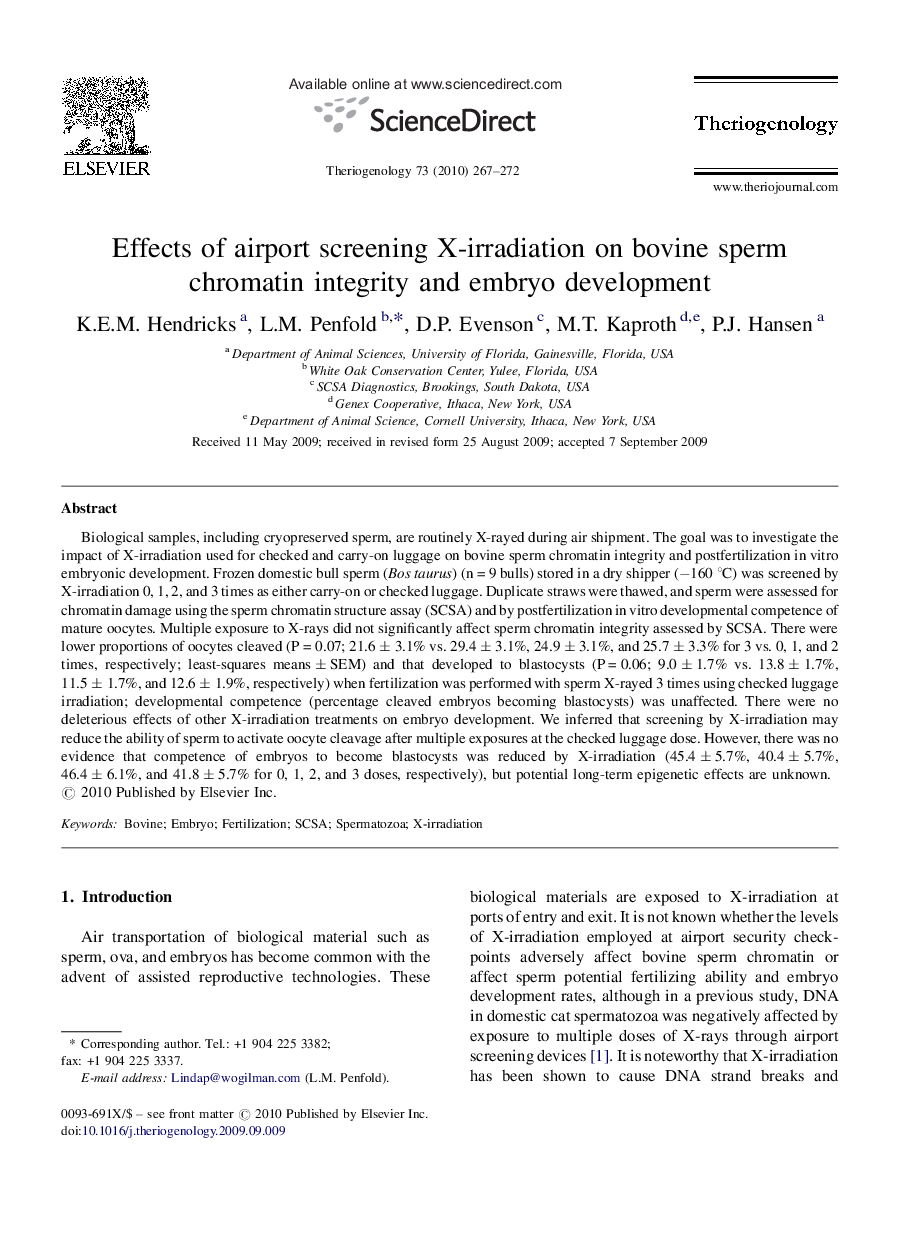| Article ID | Journal | Published Year | Pages | File Type |
|---|---|---|---|---|
| 2095936 | Theriogenology | 2010 | 6 Pages |
Biological samples, including cryopreserved sperm, are routinely X-rayed during air shipment. The goal was to investigate the impact of X-irradiation used for checked and carry-on luggage on bovine sperm chromatin integrity and postfertilization in vitro embryonic development. Frozen domestic bull sperm (Bos taurus) (n = 9 bulls) stored in a dry shipper (−160 °C) was screened by X-irradiation 0, 1, 2, and 3 times as either carry-on or checked luggage. Duplicate straws were thawed, and sperm were assessed for chromatin damage using the sperm chromatin structure assay (SCSA) and by postfertilization in vitro developmental competence of mature oocytes. Multiple exposure to X-rays did not significantly affect sperm chromatin integrity assessed by SCSA. There were lower proportions of oocytes cleaved (P = 0.07; 21.6 ± 3.1% vs. 29.4 ± 3.1%, 24.9 ± 3.1%, and 25.7 ± 3.3% for 3 vs. 0, 1, and 2 times, respectively; least-squares means ± SEM) and that developed to blastocysts (P = 0.06; 9.0 ± 1.7% vs. 13.8 ± 1.7%, 11.5 ± 1.7%, and 12.6 ± 1.9%, respectively) when fertilization was performed with sperm X-rayed 3 times using checked luggage irradiation; developmental competence (percentage cleaved embryos becoming blastocysts) was unaffected. There were no deleterious effects of other X-irradiation treatments on embryo development. We inferred that screening by X-irradiation may reduce the ability of sperm to activate oocyte cleavage after multiple exposures at the checked luggage dose. However, there was no evidence that competence of embryos to become blastocysts was reduced by X-irradiation (45.4 ± 5.7%, 40.4 ± 5.7%, 46.4 ± 6.1%, and 41.8 ± 5.7% for 0, 1, 2, and 3 doses, respectively), but potential long-term epigenetic effects are unknown.
